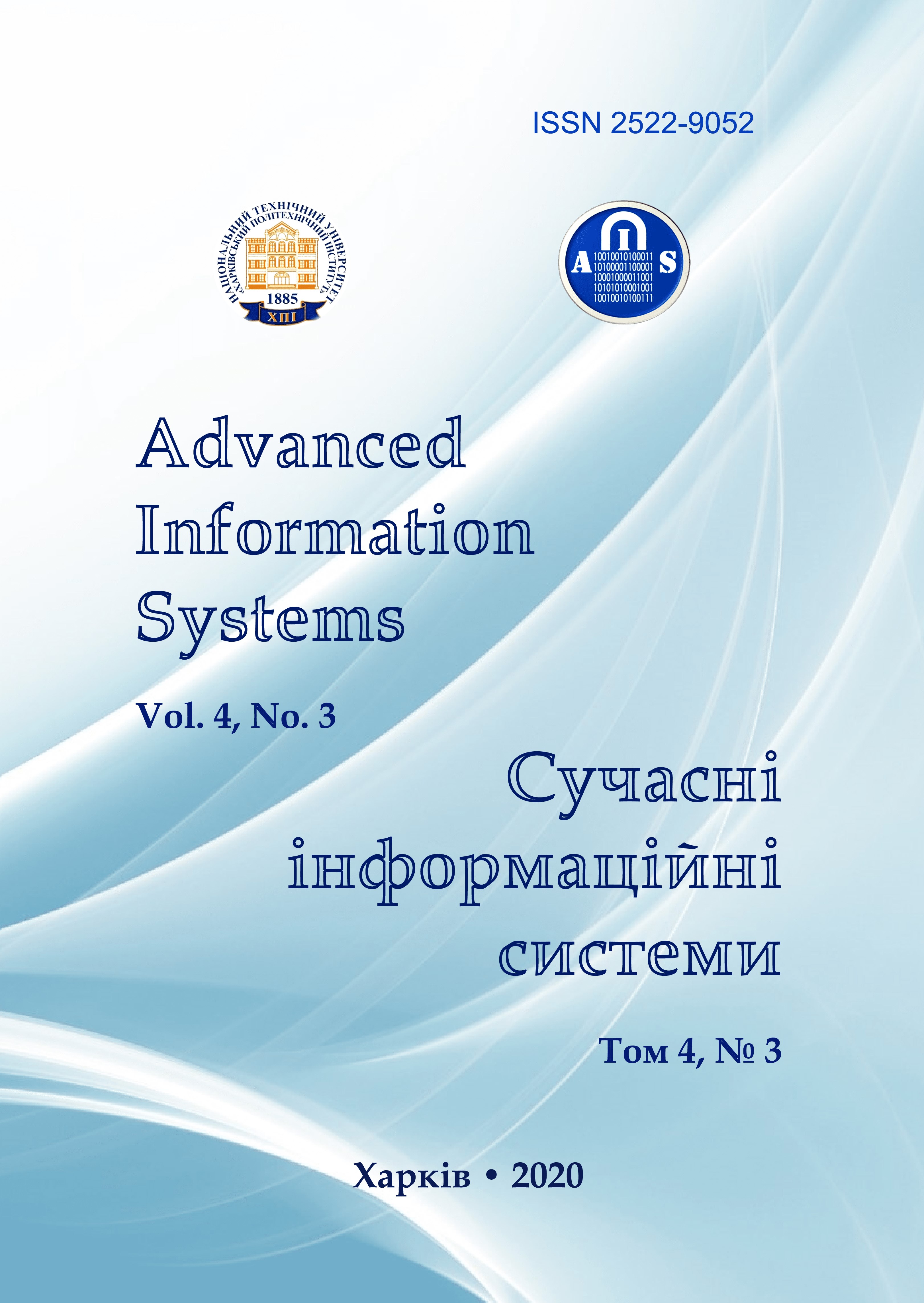SUBSTANTIATION OF THE CHOICE OF METHODS OF NON-DESTRUCTIVE TESTING OF ELEMENTS OF ENERGY EQUIPMENT USING A FUZZY LOGIC APPARATUS
Main Article Content
Abstract
Article Details
References
Efimov, V.V. (2007), Means and methods of quality management, Knorus, Moscow, 232 p.
Ogvozdin, V.Yu. (2009), Quality management. Fundamentals of theory and practice, Textbook, Business and Service, Sixth Moscow, 288 p.
Kruglov, M.G. and Shishkov M. (2007), Quality management as it is, Eksmo, Moscow, 544 p.
(2009), DSTU ISO 9001: 2009, Quality management systems. Requirements, available at:
http://www.plitka.kharkov.ua/certs/433_iso9001.pdf.
(2001), DSTU ISO 9004: 2001, Quality management systems. Performance Improvement Guide, available at:
http://online.budstandart.com/ua/catalog/doc-page?id_doc=45956.
Hryhorenko, I. Drozdova T., Hryhorenko S. and Tverytnykova E. (2019), “Application of user interface Fuzzy Logic Toolbox for quality control of products and services”, Advanced Information Systems, Vol. 3, No. 4, pp. 118–125, DOI: http://dx.doi.org/10.20998/2522-9052.2019.4.18.
Mochammad, Iswan, Andre Hasudungan, Lubis, Imelda Sri, Dumayanti, Raheliya Br., Ginting and AndysahPutera Utama, Siahaan (2017), “Implementation of Fuzzy Tsukamoto Algorithm in Determining Work Feasibility”, Journal of Computer Engineering (IOSR-JCE), Vol. 19, Issue 4, Ver. IV, pp. 52–55, DOI: http://dx.doi.org/10.9790/0661-1904045255.
Yu, Zhang, Jun, Chen, Chris, Bingham and Mahdi, Mahfouf (2014), “A new adaptive Mamdani-type fuzzy modeling strategy for industrial gas turbines”, IEEE International Conference on Fuzzy Systems (FUZZ-IEEE), 6–11 July 2014, Milan, Italy. available at: http://bwbooks.net/index.php?id1=4&category=comp-lit&author=leolenkov-av&book=2005.
Sankar, Ganesh S., Bhargav, Reddy N. and Arulmozhivarman, P. (2017), “Forecasting air quality index based on Mamdani fuzzy inference system”, 2017 International Conference on Trends in Electronics and Informatics (ICEI), 11–12 May 2017, Tirunelveli, India, DOI: http://dx.doi.org/10.1109/ICOEI.2017.8300944.
Hryhorenko, I.V., Hryhorenko, S.M. and Gavrylenko, S.Yu. (2017), “Investigation of the possibilities of using the fuzzy-logic apparatus in measuring and classifying defects in metal tubes”, Ukrainian Metrological Journal, vol. 2, рр. 42–49, DOI: https://doi.org/10.24027/2306-7039.2.2017.109757.
Hryhorenko, I.V. and Hryhorenko, S.M. (2017), “Investigation of the influence of external and internal factors on the error in detecting defects in metal products thanks to the fuzzy-logic apparatus”, Metrologiya ta priladi, vol. 3 (65), рр. 44–48.
Hryhorenko, I.V., Hryhorenko, S.M. and Bezborodyj Ye.A. (2018), “Using fuzzy logic to control accuracy and improve product quality”, Metrologiya ta priladi, vol. 3 (71), рр. 52–57.
